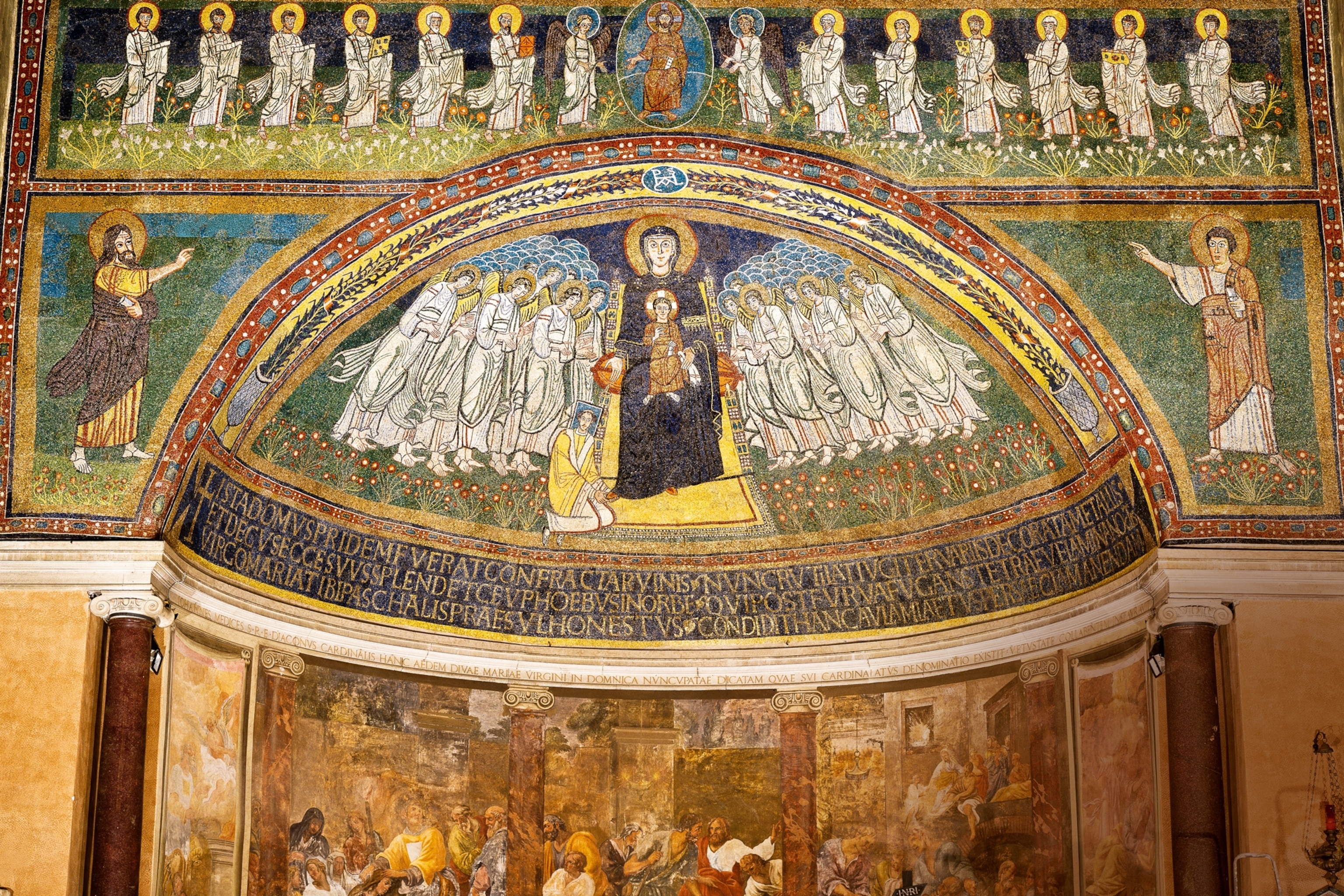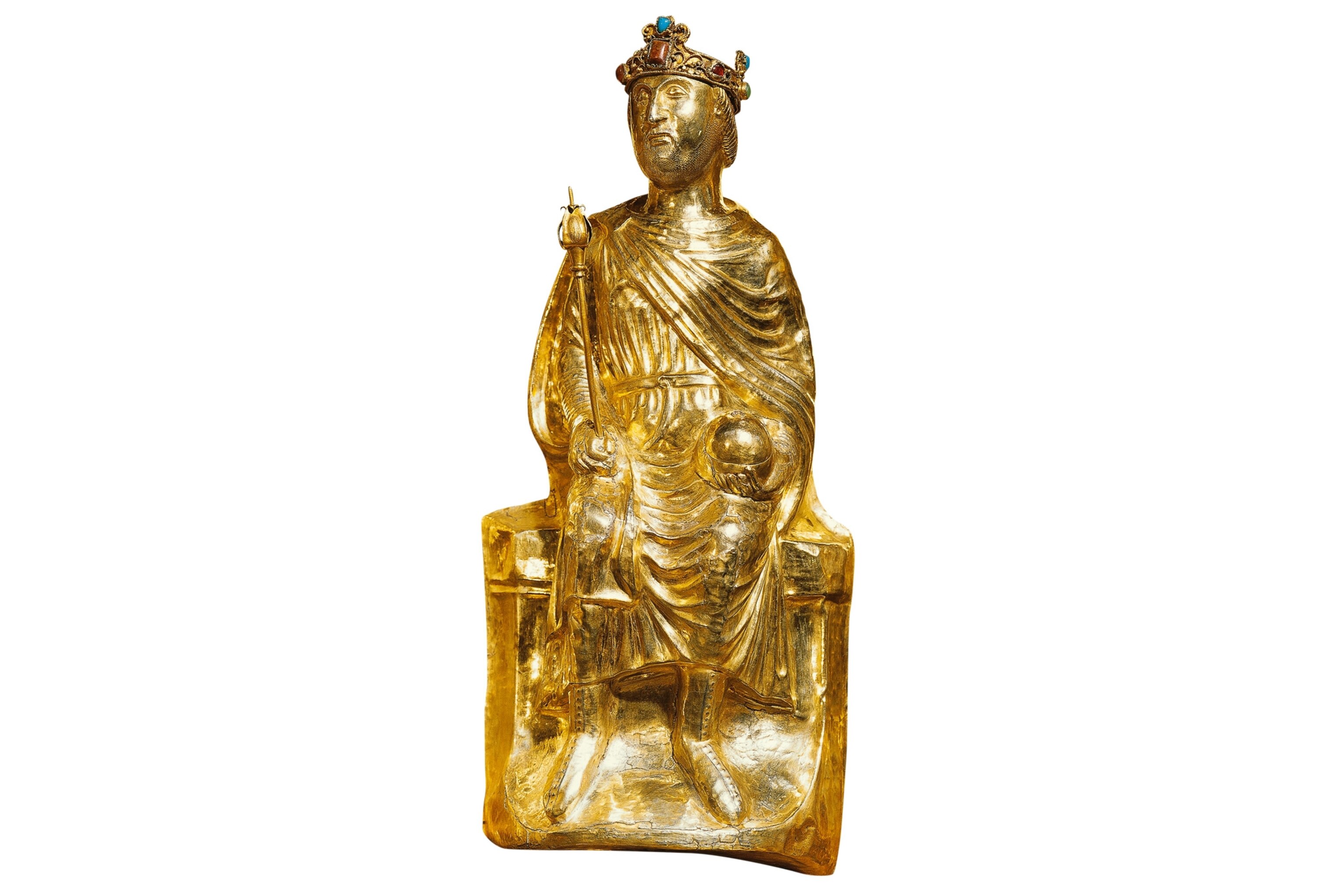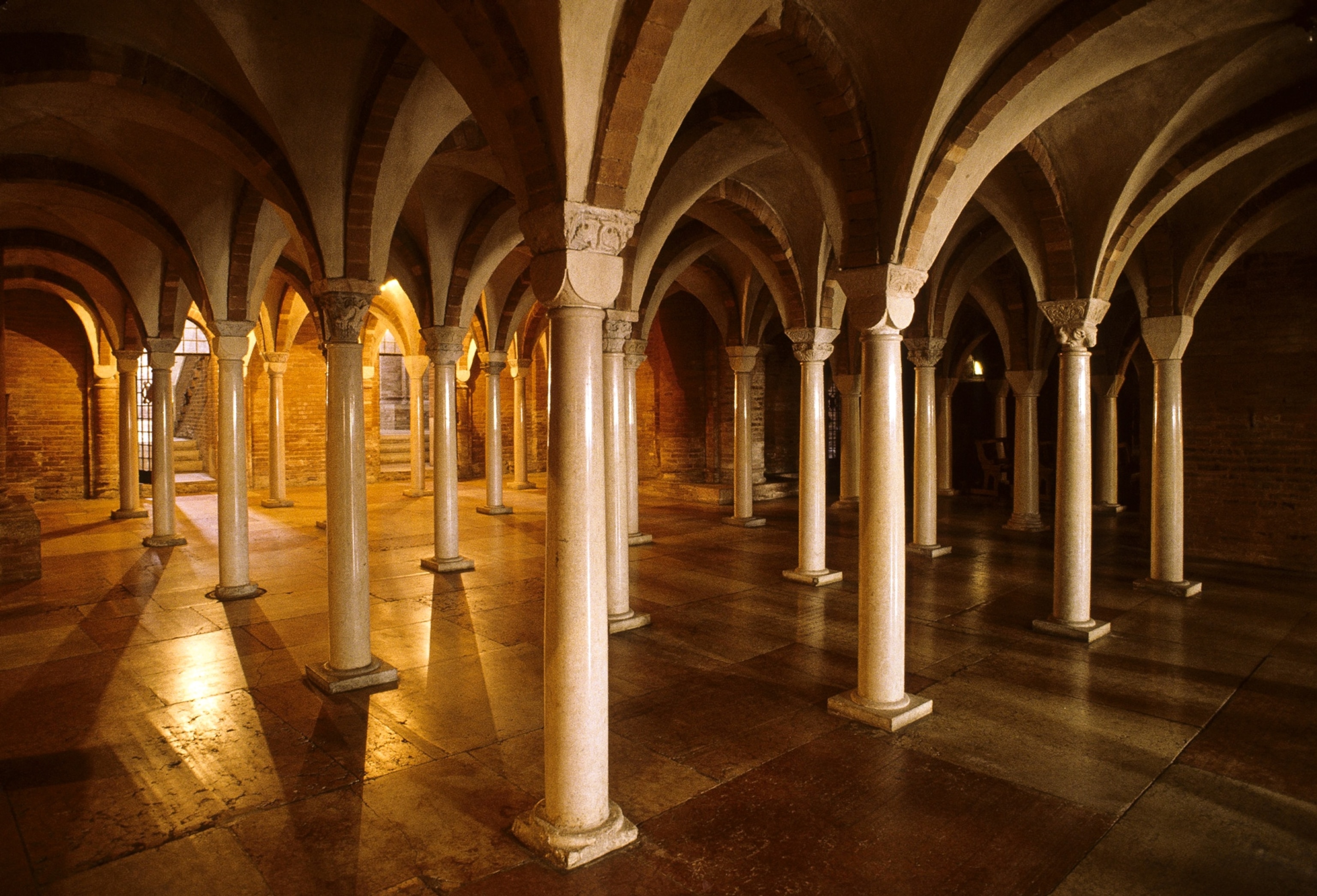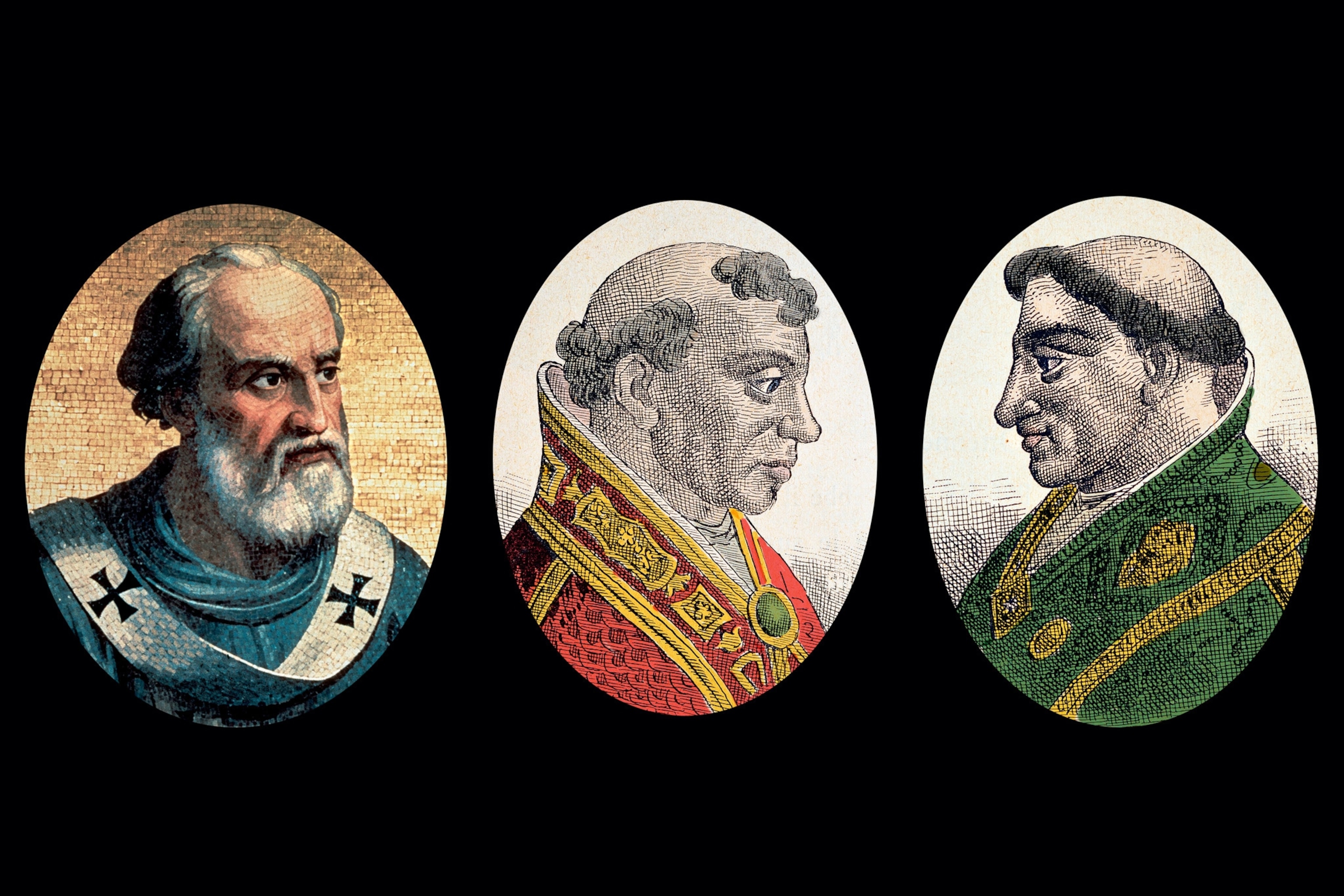
In 897, the corpse of a pope was exhumed—to be put on trial.
Known as the 'Cadaver Synod,' the posthumous trial of Pope Formosus resulted from the chaos of the ninth century as factions battled for control of the church.
It must have been a shock for the poor Roman fisherman who, according to legend, pulled up the body of a dead pope from the Tiber River. Few people would ever have expected to dredge up the remains of a pontiff who, nine months after his death, was at the center of on of the most bizarre episodes in the history of the papacy: a posthumous trial of a corpse. The story of Pope Formosus and the indignities suffered by his mortal remains embodied the tangled politics of late ninth-century Europe.
A quick glance at the list of popes in that era shows that Christian concord was notably absent from Rome and the Vatican: Instead, there was chaos. Between 872 and 965, no fewer than 24 popes were coronated in Rome (between 896 and 904, there was roughly one pope appointed per year!) Occupational hazards of the papacy included being deposed, thrown in prison, or murdered. The high rate of papal turnover could be attributed to both political intrigue and government instability. (See also: Meet the man with the keys to the Vatican.)
The Fortress of the Popes

By the 800s, Rome retained few traces of its glory days. Depopulated and in ruins, a large part of the city had become a ghost town filled with “green snakes, black toads and winged dragons,” according to one chronicler. Much of the population lived in a small sector of the city while the increasingly weakened papacy hunkered down in the Vatican, safe behind the circuit of fortified walls built by Pope Leo IV (847-855).
Dukes and kings
In the late ninth century, the papacy played a central role in violent power struggles across the Italian peninsula. Openly intervening in the family feuds of Rome’s rulers, the pontiffs also played a central role in the regional struggle for supremacy. This conflict was fought, on the one hand, by the Carolingian emperors who, throughout the ninth century, emerged as protectors of the Catholic Church and lords of Italy. Their supremacy was increasingly challenged by burgeoning local dynasties such as the Dukes of Spoleto. (See also: How Martin Luther started a religious revolution.)
From early in his career, Formosus found himself tangled up in these complex conflicts. From his consecration as bishop of Porto—a diocese located at the mouth of the Tiber, slightly north of Ostia—he carried out numerous diplomatic missions in the name of the papacy, which took him to Bulgaria, Constantinople, and the Carolingian court. Formosus showed favor to Arnulf of Carinthia, a Frankish king of the Carolingian imperial dynasty, who aspired to take the throne as King of Italy.

Formosus’s diplomacy went over badly with his superiors. Pope John VIII feared that if a king from such a powerful imperial dynasty became King of Italy, Rome would lose its independence. Pope John had Formosus excommunicated in 876 and expelled from his diocese. He and his followers were forced to flee Rome under threat of a trial for corruption and immorality. They found refuge in the court of Guy III of Spoleto.
Lying low for several years in northern Lombardy, Formosus waited for the situation in Rome to improve. In 883, under the new, brief papacy of Marinus I, Formosus’s excommunication was lifted, and he was reinstated as the head of his former diocese in Porto. After the death of Pope Stephen V in 891, Formosus became pope.
Ally of the emperor
The new pope had to confront a dangerous political situation. Shortly before Formosus was appointed, Guy III of Spoleto—his former protector—had been crowned King of Italy in Pavia. He had then headed to Rome to force Pope Stephen V to crown him Holy Roman Emperor. After Stephen V’s death, Formosus had to confirm Guy’s coronation and recognize his son Lambert as successor to the empire. Formosus, however, distrusting the new emperor and King of Italy, began to resume diplomatic ties with Arnulf of Carinthia, inviting him to confront Guy in Italy.
To seize what he thought was his by right, Arnulf made a first incursion into Milan and Pavia in 893. Three years later, Guy had died, and his son Lambert had been crowned Holy Roman Emperor in Rome. In response, Arnulf laid siege to the Eternal City. Inside Rome, the Spoleto faction loyal to Lambert rebelled and imprisoned Pope Formosus in the Castel Sant’Angelo. But they were unable to stave off the invaders. Formosus was freed and a few days later, he crowned Arnulf emperor in St. Peter’s Basilica. Some months later, Pope Formosus died, whether of poison or old age (he was 80) was uncertain. Some praised him as a just and pious pope; others were unable to forgive him for favoring the German Arnulf over the Italian Spoleto clan.

Lambert’s revenge
The story, however, did not end there. Not even death, it turned out, would exempt Formosus from the seemingly eternal cycle of intrigue and infighting. Formosus was succeeded by Boniface VI, who only lived 15 days into his term, and Boniface was succeeded by Stephen VI, a former follower of Formosus who also initially recognized Emperor Arnulf.
No sooner had Arnulf left Italy, however, then Stephen VI aligned himself with the local Spoleto family. Lambert went to Rome, which had already been taken over by his supporters, to convince the new pope to condemn Formosus’s actions and tarnish his reputation, despite the fact that the man was dead and buried.
This condemnation, insisted Lambert, had to be in public to shame Formosus’s followers. It would be conducted under the solemnity of canon law and held before the papal curia and Roman nobility. Most bizarrely of all, it was decided that Formosus himself would attend his own posthumous trial.
Sins of the Dead

The legal procedure to bring the dead pope Formosus to trial may, historians suggest, have been derived from the decrees of the sixth-century pope Gregory the Great. Those guilty of mortal sin who had been interred in a church, Gregory ruled, had to be condemned. Gregory cited several cases of corpses that had been exhumed as part of this posthumous system of justice.
Dead man talking?
The event was carefully prepared down to the last detail. In early 897, Pope Stephen VI and Lambert ordered that Formosus’s corpse be disinterred and brought to San Giovanni in Laterano for the proceedings. The trial was convened as a synod with all the cardinals, bishops, and other ecclesiastical dignitaries in full attendance.
Dressed in his official papal vestments, the dead pope sat propped up in a chair. The accused cadaver was assigned a defense lawyer, and the charges were read to him. His nomination as pope was illegal, one of the charges ran, because he had been Bishop of Porto at the time. This flouted canon law, the accused was told. Addressing the corpse directly, Pope Stephen’s counsel asked it: “Being Bishop of Porto, why did you, with great ambition, usurp this See of the Apostle?” A deacon was appointed to speak for the deceased. Sources say he mostly read from prepared statements.
It is unknown if the dead pope’s counsel dared to mount much else in the way of a defense. In any case, the sentence was not open to appeal. The synod signed the order to depose Formosus, and then condemned him and revoked all his appointments, so that all clerics ordained by him were forced to repeat the appointment process all over again.
Formosus’s corpse was then stripped of his papal vestments. The three fingers he had used in consecrations and blessings were chopped off. The body was then dressed in common clothes and buried in a pauper’s grave. Not content with that outcome, Stephen VI had the body dug up again and thrown into the Tiber.
Popes, Poison, and Plots

872-882
John VIII
A year after crowning Charles III (the Fat) as emperor, John VIII was poisoned, perhaps by someone close to him. According to Fulda’s Annals, when the poison was slow to take effect, he was hit over the head with a hammer.
891-896
Formosus
According to rumors, Pope Formosus was already 80 years old when he was poisoned by supporters of the Dukes of Spoleto. Contemporary accounts say he died in great pain.
896-897
Stephen VI
The successor to Formosus had his predecessor’s cadaver put on trial. After the deceased pope was condemned, his furious followers had Stephen arrested in the Lateran Palace. He was strangled soon after in prison.
903
Leo V
A month into his papacy, Leo V was deposed by Christopher, now considered by the church to be an antipope. Leo died in prison, perhaps on Christopher’s orders.
914-928
John X
He was imprisoned and killed in the Castel Sant’Angelo at the behest of Marozia, a noblewoman who reproached the pope for not offering the imperial crown to her husband.
Even for the Romans of the time, who were accustomed to interminable political upheaval, this episode marked an unacceptable low. Stephen VI was imprisoned and strangled to death in jail a few months after the Cadaver Synod. Two years later, Pope John IX reinstated Pope Formosus and banned further trials for dead popes.
Formosus’s trial remains one of the strangest chapters in the long history of the Catholic Church. The story about the humble fisherman pulling Pope Formosus’s remains from the Tiber may well be a myth, but we do know that the story of Formosus’s dishonored body has an ending: in 897, it was reburied with full Christian honors.








